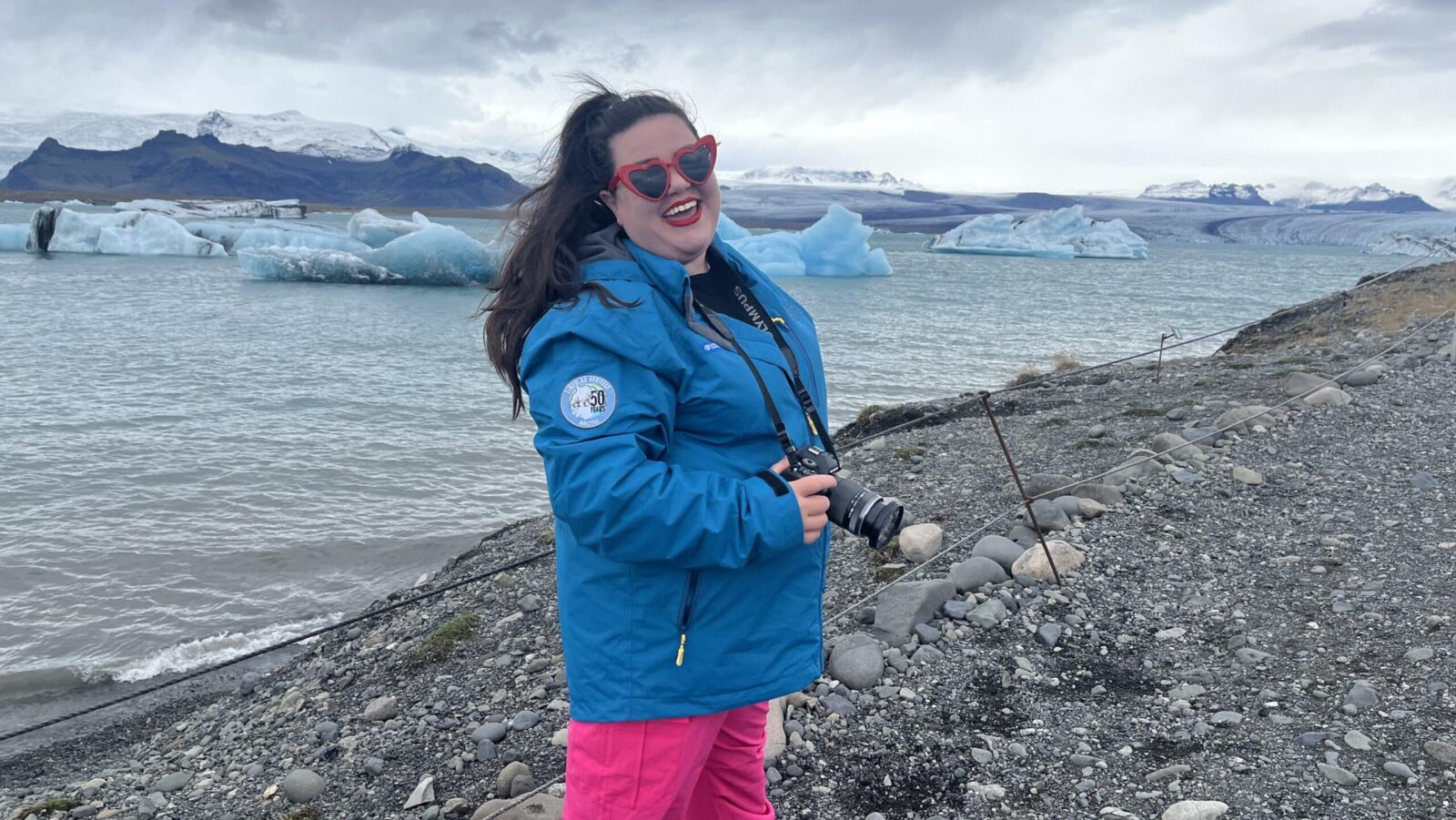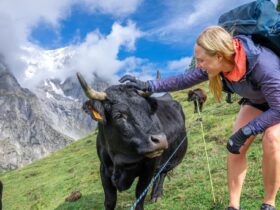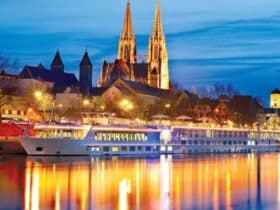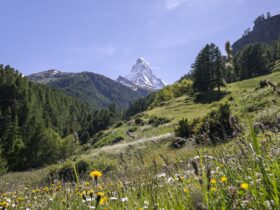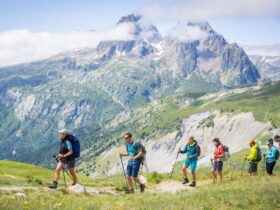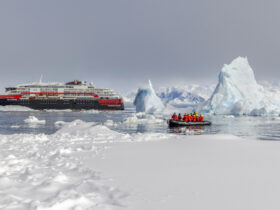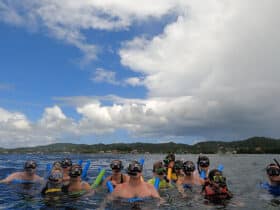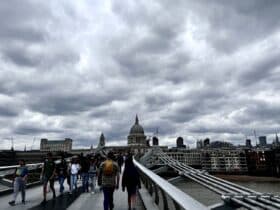Based on the weather alone, I was thrilled to go to Iceland with National Geographic Expeditions and Lindblad Expeditions. As someone who lives in Florida, and the temperatures in August were still reaching triple digits, the coolcation expedition cruise was a welcome relief from the blazing sun. But one look at the National Geographic Expeditions 10-day itinerary of the Circumnavigation of Iceland made it clear that the cooler weather wasn’t the only draw, and that I was in for the trip of a lifetime.
As I packed sweaters, jeans, waterproof pants, and layers of clothes, I wondered what the land of fire and ice would really be like. As I soon learned, the small country of Iceland is a stellar place for an expedition cruise that helped me see more of Mother Nature’s incredible wonders, push myself past my comfort zone, and experience so much Iceland has to offer.
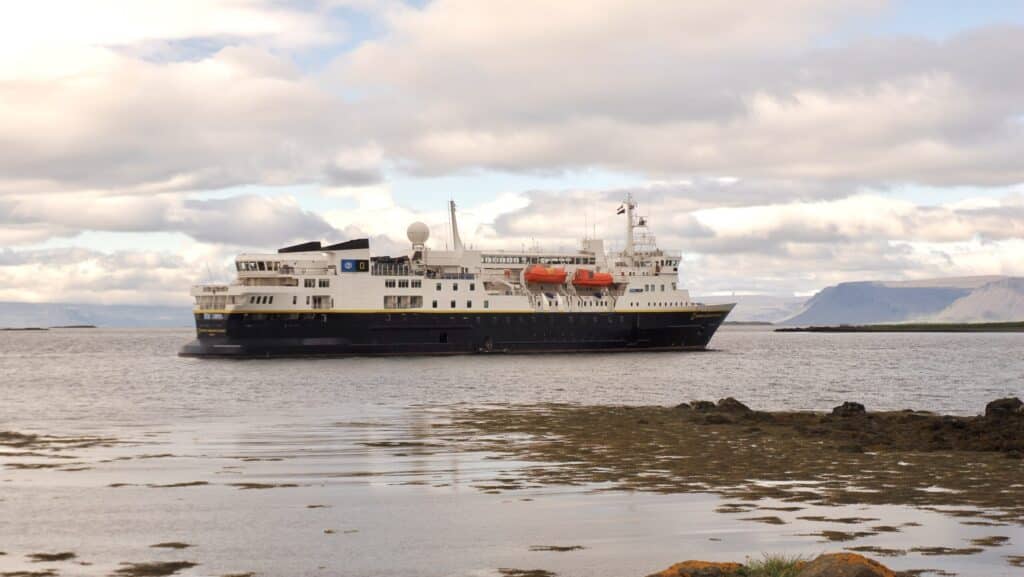
I sailed on the National Geographic Explorer, an 81-cabin, 148-guest ship, which was comfortable and quickly became home in more ways than one. Besides the larger-than-anticipated cabins, the lounges and common areas were well-appointed, the crew was friendly, and my fellow passengers quickly became fast friends.
The seasonal summer sailing focuses on the juxtapositions all around Iceland, from towering mountains overlooking water-filled fjords to dramatic volcanoes and glaciers. But these natural wonders are just a small part of the overall experience. National Geographic experts, naturalists, photographers, and more are all on hand to lead excursions, give presentations, and answer just about any questions guests may have.
QUESTIONS ANSWERED: Ask a tour guide: Surprises for first-time tour travelers
Onboard safety is also a huge part of any National Geographic Expeditions trip. Because of that, I pushed myself outside of my comfort zone multiple times over 10 days. I hiked to the Arctic Circle, participated in an optional ship-wide polar plunge into 44-degree water, and cruised around an iceberg-filled bay on a duck boat-style vessel.
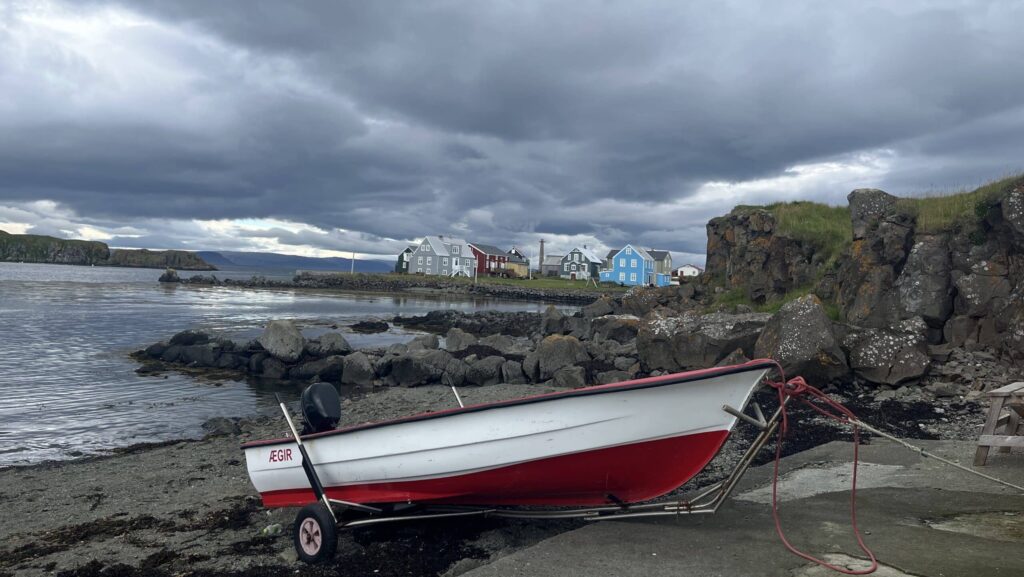
This expedition cruise was a fun way to meet new people, all of whom care about nature and have a sense of adventure, and explore a new-to-me destination.
Things to know about a circumnavigation of Iceland
- The onboard crew is friendly and wants to ensure you have the best trip possible. It includes a mix of hospitality pros, guides, naturalists, photographers, and more. All of the onboard experts were eager to answer questions and explain the natural phenomenon of Iceland.
- The photos of National Geographic Explorer on the National Geographic Expeditions website are outdated. The ship got a facelift bringing new life into the common areas, especially the main lounge where bright colors are used, plus panoramic windows show off the outside world. The cabins are spacious with plenty of storage, and the beds are comfortable. I also loved the larger-than-expected bathrooms, which feature a single sink, a toilet, some shelving, and a stand-up shower that’s larger than most mega-cruise ship showers. In 2025 and 2026, this cruise takes place on National Geographic Endurance, though I have not personally sailed on this ship, National Geographic says it’s purpose-built for wave slicing and ice breaking in polar regions.
- Wildlife spotting happens nearly every day. From the comfort of the lounge, we spotted many seabirds. On land, we say puffins, sheep, Icelandic horses, reindeer, and more. During the evening recap, the group saw a breaching whale just a few hundred feet from the ship.
- The onboard food is great, though breakfast does get a little repetitive. More on that below.
- The crew is very mindful of guest safety. This was especially true during zodiac transfers, wet and dry landings, and hikes. When seas were rough, the crew also put ropes up around the common areas for extra handholds. As our expedition leader, Leah, told us over the intercom during the rough waves, “Keep one hand for yourself, and one hand for the ship.”
- Each guest is provided with a bright blue parka jacket that you get to keep at the end of the cruise. Rooms also have life jackets, which you must take with you for zodiac landings.
Circumnavigation of Iceland tour highlights
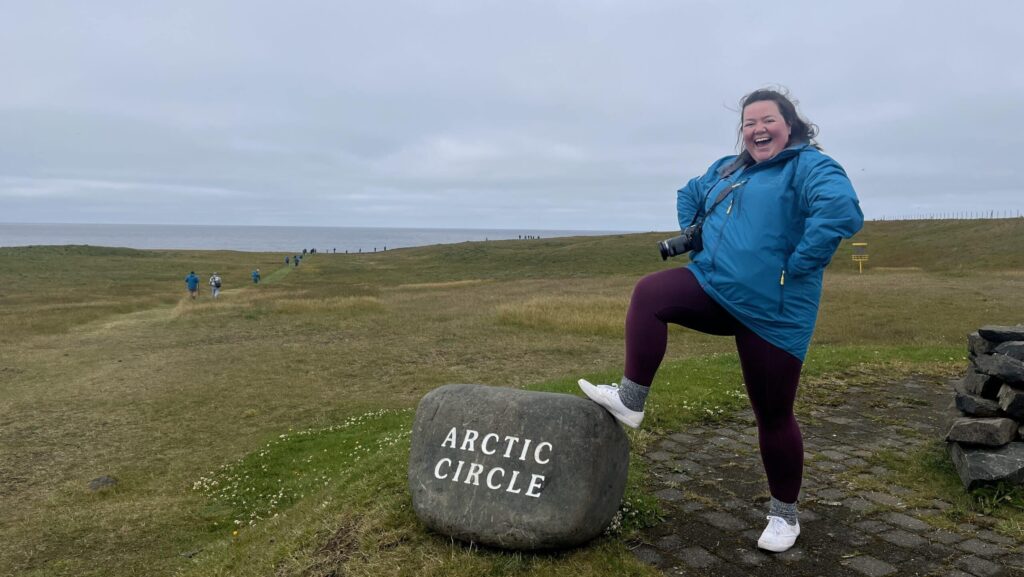
- Hiking to and crossing the Arctic Circle
- Bird watching for puffins and Arctic terns
- Photography and naturalist walks through stunning landscapes
- A true polar plunge
- Making friends with well-traveled guests
- Waterfalls and glacier tours
Important details about a circumnavigation of Iceland
Itinerary
This ten-day expedition cruise starts and ends in the Icelandic capital of Reykjavik, and sails around the entire circumference of the country. It includes stops at Húsavík, which is the gateway to exploring many waterfalls; Grimsey, the northernmost inhabited territory in Iceland and the arrival point for the Arctic Circle; and Djúpivogur, home to Europe’s largest glacier.
There’s at least one big activity each day, but most days offer two. Most ports of call are reached by small inflatable boats called zodiacs and landings can be dry (onto land) or wet (into shallow water). The itinerary can shift depending on the weather, so as a passenger you’ll need to be flexible with what you plan to do each day. On my sailing, we couldn’t anchor at Vigur Island due to bad weather, so the owner of the island came aboard our ship to share her harrowing tale of crossing Antarctica alone.
DISNEY GROUP TOURS: What to know about Adventures by Disney
Due to rough seas we also never ported at Heimaey in the Westman Islands. Instead, we booked it back to Reykjavik where a fissure volcano had just started erupting the day prior. Our cruise team made last-minute bus reservations for everyone onboard to see the volcano. In the end, the extra time in Reykjavik meant seeing the “fire” part of the land of fire and ice, a perfect complement to the glaciers we saw earlier in the sailing.
Each day was exciting waking up in a new place, and the onboard experts shared their knowledge with guests who wanted to soak up as much information as possible.
Route Notes
There is only one route for this expedition. You will start and end in Reykjavik and go clockwise around the country. Flights should land at the Keflavik Airport, about 45 minutes from downtown Reykjavik.
Activities
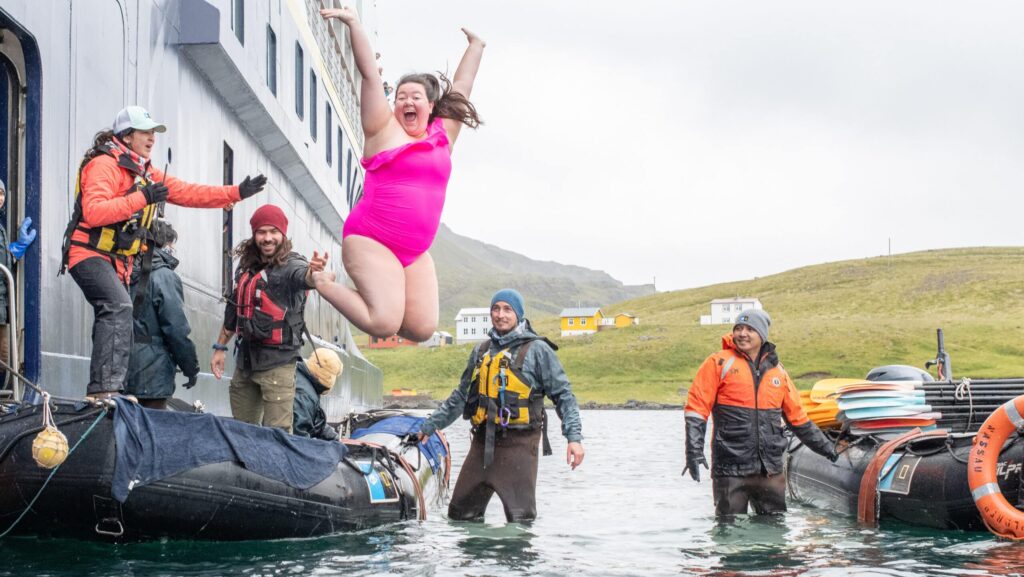
This is a very active cruise, with options to hike nearly every day. Other activities include kayaking, walking, city exploration, and nature sightings. There’s also a once-a-cruise polar plunge, though the date is always subject to weather and sea conditions. Guests do need to be able to get into and out of a zodiac on most days, and waters can be unpredictable. If you don’t want to get off the ship, you certainly don’t have to, but most of the fun is had shoreside.
Onboard, there are daily talks from the National Geographic experts and nightly happy hours where guests and staff come together to talk about the day and see what’s ahead for the following day.
Accessibility
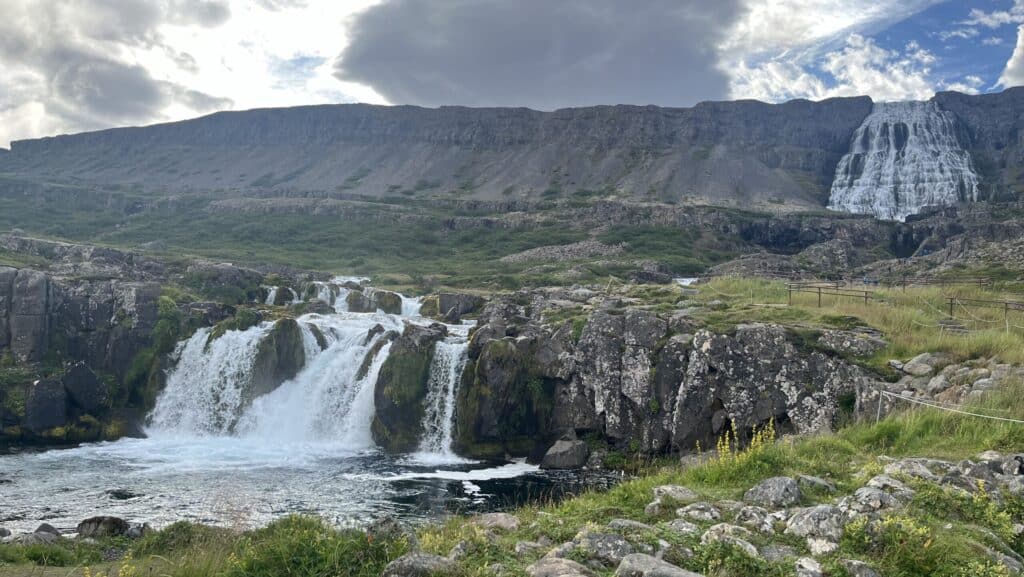
My cruise included guests ranging in age from kids to older adults, all with different mobility levels. Many zodiac landings required guests to get into and out of zodiacs with wet and dry landings onto rocky beaches or docks. The hikes ranged from moderate one or two-mile walks over gravel paths to more rugged five-mile or longer expeditions across mountain tops and river waters. While National Geographic Expeditions ranks this cruise’s activity level as light or moderate, I would say it’s really moderate to strenuous.
TRAVEL IN STYLE: What to know about Smithsonian Journeys
There were only two days out of 10 when the ship docked at a pier like a large ocean liner, which made it more accessible for people with mobility issues to get off and explore the destination. This cruise may not be the best fit if you think you will have trouble getting into and out of a zodiac or hiking over uneven terrain.
Since this is a cruise, you can always choose to stay onboard if you don’t want to traverse the waters in a zodiac, but still see Iceland outside of the windows in the lounge, dining room, bistro, or your cabin. There are incredible views from the observation deck, which is flanked on one side by a library filled with books about the Arctic.
The ship’s crew and onboard specialists were always willing to help guests who needed it. Whether it was an older guest who needed extra assistance going up or down stairs when the elevator was occupied, or if someone needed extra time getting off the ship down the gangplank on pier landings, someone was always on hand.
Families

In my opinion, this sailing is better for families with older kids who can participate in the more rigorous activities. Since the cruise happens in summer, kids are already out of school, so there’s no need to worry about missed class time. There were a handful of kids on my sailing and they were able to take part in the National Geographic Global Explorers program, where kids get a handbook to fill out with an onboard naturalist, along with dedicated experiences just for them. National Geographic Explorer and Endurance have rooms that can sleep three people.
Dining
The onboard dining options are great but can be limited. Breakfast takes place in the bistro and dining room, which are adjoining spaces. The morning meal is a buffet with the same dishes and one rotational option each day. Lunch is a blend of buffet and a la carte options, with the buffet featuring salads and build-your-own sandwiches, and the a la carte menu changing themes each afternoon. Lunch is served in the bistro, dining room, and observation lounge.
Dinner is served in the bistro, dining room, and chart room, and is fully a la carte. The menu changes every evening, though some staple dishes like Caesar salads, steaks cooked to order, and grilled chicken can be ordered every day. The vibe is super casual, and no one dresses up. It’s open seating for each meal, but after a few days, everyone on my sailing settled into a favorite spot and tended to sit with the same group.
One thing I found most interesting about the expedition cruise is that National Geographic and Lindblad Expeditions attempts to source as much of its food within 250 miles of the ship’s location. This means that dishes can be regional, and the food is as fresh and sustainable as possible. Serving sizes can be small by American standards, but you can always ask for another plate. After the fresh bread basket, a salad or soup, an entree, and a small dessert, I was comfortably full each night.
In the lounge, there is a bar for drinks, which are included in the price of the cruise. The bistro also features a coffee and cocktail bar, plus grab-and-go fruits. Each afternoon the bistro hosted tea time, which included an array of tea sandwiches and cookies. In the chart room, an espresso machine can whip up fresh coffee drinks, and cookies are always available.
Amenities
National Geographic Explorer has a fitness room and a small spa with a sauna. The onboard masseuse gives massages on request (not included in the cruise fare). There are early morning stretches in the lounge hosted by the wellness coordinator.
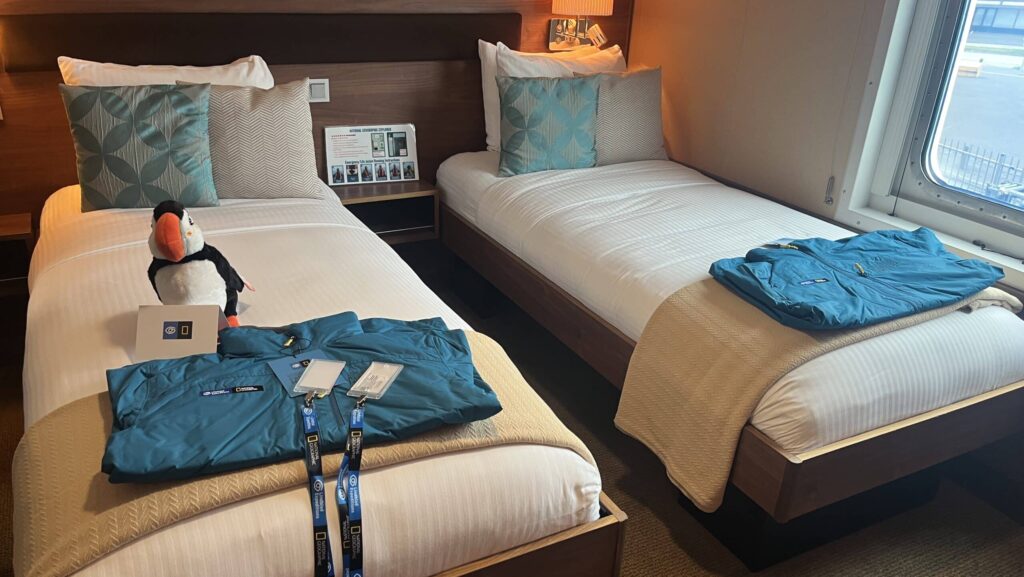
Each stateroom has a surprisingly large space for storage, and bathrooms are equipped with shower-mounted shampoo, conditioner, and soap. Plus there was a small branded bag of lip balm, a loofah mat, and lotion.
One of my favorite amenities was the OM Photo Locker, where I could check out cameras, lenses, and more photography equipment to use throughout the cruise. I was shocked that this was an included amenity when access to this equipment would usually cost a small fortune to buy on my own. I kept the same camera and lens throughout my cruise and got some incredible photos of Iceland and the wildlife that calls the country home.
RIVER CRUISING: Best river cruises through Europe
There is also an onboard doctor and nurse if the need arises. After the polar plunge, I realized my foot was bleeding profusely from my toenail getting caught and ripped off by the zodiac after a sudden wave hit and my toe caught on the textured sitting area. The doctor was able to help me clean my newly naked toe and checked in on me daily to change the dressings.
Circumnavigation of Iceland: best for/worst for
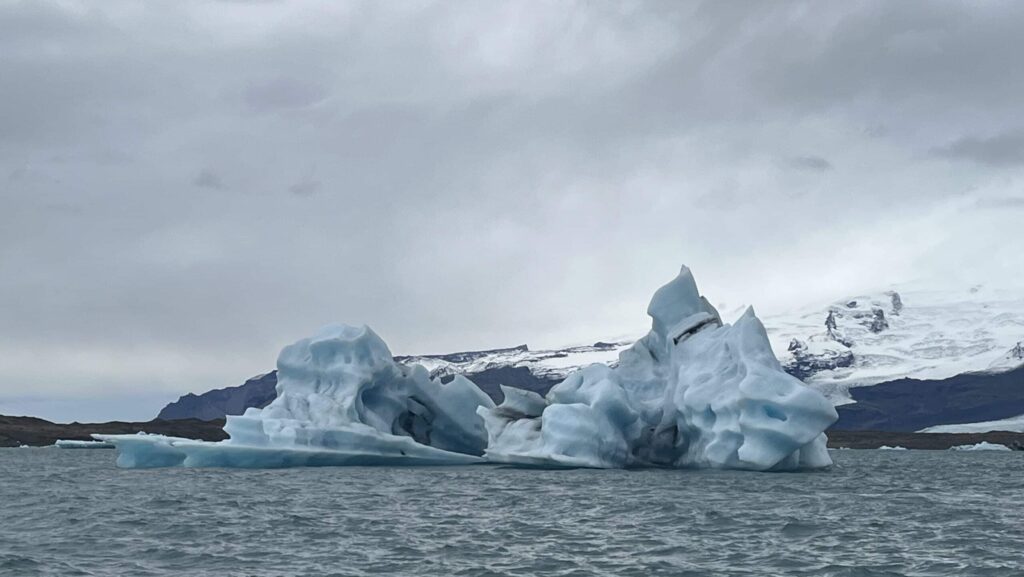
The expedition cruise is ideal for active travelers who want to see remote destinations, have a particular interest in birding, or want to soak up the knowledge of expert guides. You will need a moderate level of fitness to truly enjoy everything that the cruise has to offer. Getting into and out of the zodiacs can be challenging for those with balance issues (though the safety-minded crew is always there to assist), and the hiking excursions can be long distances over varied terrain.
This tour can be hard for people with mobility issues that impact balance or the ability to stand or walk for extended periods. Families with very young children may also want to look into alternative Iceland tours, since this one is very active and little kids may find some activities too hard or boring. National Geographic Expeditions offers land-based Iceland tours for those who don’t want to travel by ship, too.
A note about seasickness: I cruise world at least 10 times a year and usually take motion sickness medicine like Dramamine to help with any seasickness that may occur. I took the medicine daily, but in the final few days of the sailing, the seas got very rough. One of my fellow passengers stated that it felt like their voyage across the Drake Passage to Antarctica late last year. On the final full day of the sailing, I sheltered in my room and closed the blackout blinds so I couldn’t see the ocean and still got very sick. Once the ship got into Reykjavik’s harbor I felt better. The waters around Iceland can be very unpredictable, so if you are prone to seasickness take precautions and listen to your body for when you need to rest.



